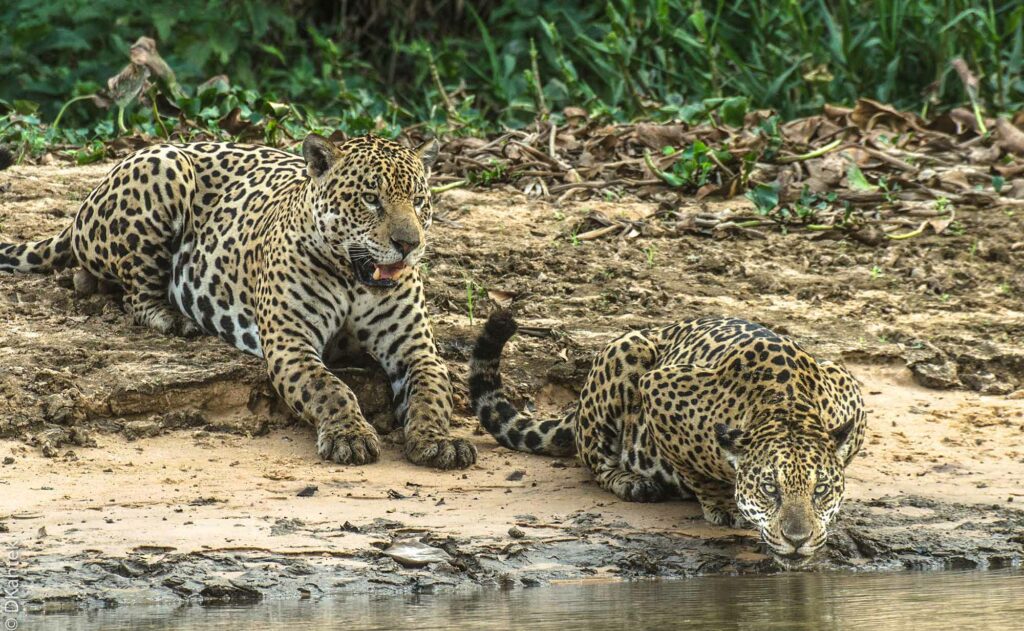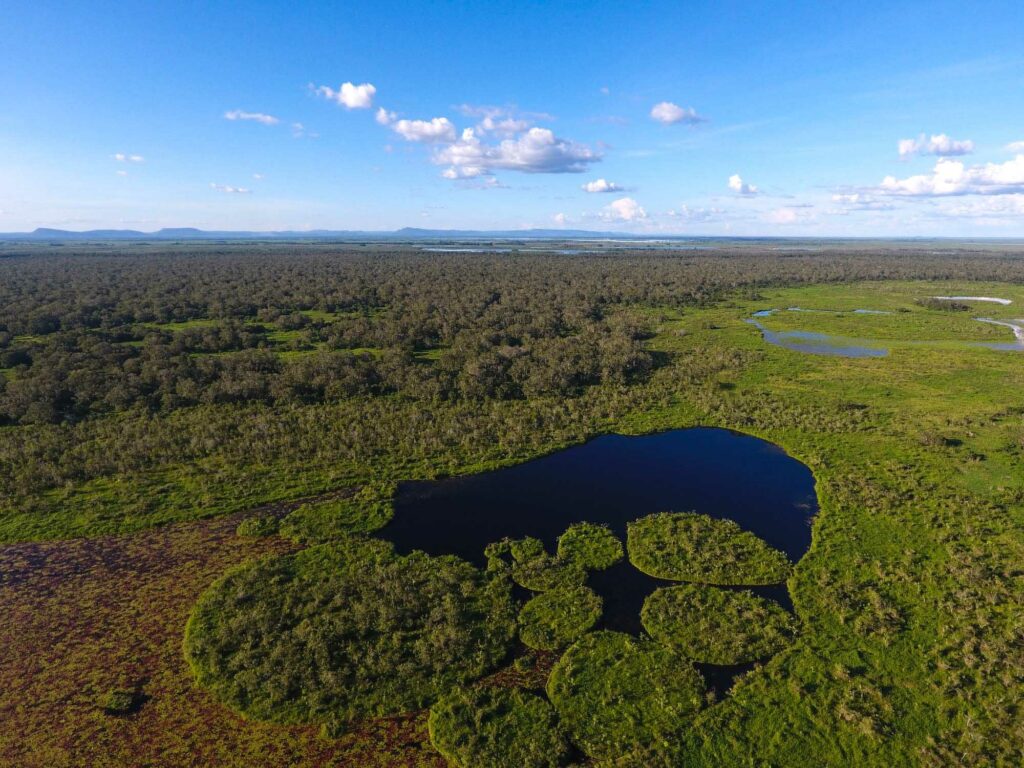Researchers have found a unique group of jaguars deep in the Brazilian wetlands that primarily survive by fishing and lead very social lives, unlike other members of the species.
Wikipedia notes that “The jaguar is solitary except for females with cubs” and eats mainly deer and other medium to large mammals, which reflects the common belief.
Yet the Oregon State University researchers and a team of international scientists appear to have found the opposite after they published the results of a study looking at a group of jaguars (Panthera onca) in the wetlands of Northern Pantanal, Brazil, earlier this month.
The jaguars documented in the study showed contrary behaviour with diets that consisted mainly of fish and reptiles, that they skilfully catch themselves in the flooded wetlands.
And motion-sensing cameras found that the big cats spent most of their time socialising, often by swimming together and relaxing on the river bank with members of their group, known collectively as a prowl or a leap.
Charlotte Eriksson, a doctoral student at Oregon State and the lead author of the paper, said that the findings contradict what was known so far that jaguars are solitary mammals whose social interactions are limited to courting or disputes over territory.
The researchers carried out almost all their work from boats as the wetlands inhabited by the jaguars are isolated, with no roads and no settlements in the region.
The researchers not only had to deal with the difficulty of working in a flooded region, but also had to cover themselves from head to toe because of the blood-sucking insects there.
Eriksson said: “Everything is boat-based. We obviously can’t drive. And we can’t really walk because there is water and there’s a ton of jaguars.”

(Daniel Kantek/Newsflash)
Taal Levi, an associate professor at Oregon State, said the region had an unusually high density of jaguars.
Levi initiated the project in collaboration with Brazilian researchers in the region in 2014.
The study found that the jaguar’s diet was made up of 55 percent reptiles, 46 percent fish, and just 11 percent mammals.
The researchers said: “This finding indicates jaguars in this region have by far the most aquatic diet and the least mammal consumption of any previously studied jaguar.
“Even tigers in the Sundarbans mangrove forest in India, which may be the most comparable large family of cats in a similar habitat to the jaguars in the Brazilian region, consume mostly land-based mammals.”
The researchers believe the density of jaguars in the area is so high because of the abundance and distribution of aquatic prey.
The abundance of food may also encourage the jaguars to be more sociable and playful as competition for food is less of a concern.

(Charlotte Eriksson/Newsflash )
Eriksson added: “If there is a lot of food around, there is less of a need to fight over it.
“Typically, you rarely see an apex predator on camera because they move over really large areas.
“Jaguars were the most frequently seen mammal on camera, which is really unusual.”
Researchers documented 80 independent social interactions between adult jaguars with one of the most impressive moments being when two male jaguars spent over half an hour sitting in front of a camera playing together.
The jaguar is a large felid species and the only living member of the genus Panthera native to the Americas. The International Union for Conservation of Nature (IUCN) classifies the big cat as ‘Near Threatened’.
The study was published under the title ‘Extensive aquatic subsidies lead to territorial breakdown and high density of an apex predator’ in the journal Ecology.

A Jaguar lying down under a tree in the northern Pantanal in Brazil.
(Charlotte Eriksson/Newsflash)
A lake in northern Pantanal in Brazil.
(Daniel Kantek/Newsflash)
To find out more about the author, editor or agency that supplied this story – please click below.
Story By: Peter Barker, Sub-Editor: Lee Bullen, Agency: Newsflash
The Ananova page is created by and dedicated to professional, independent freelance journalists. It is a place for us to showcase our work. When our news is sold to our media partners, we will include the link here.




